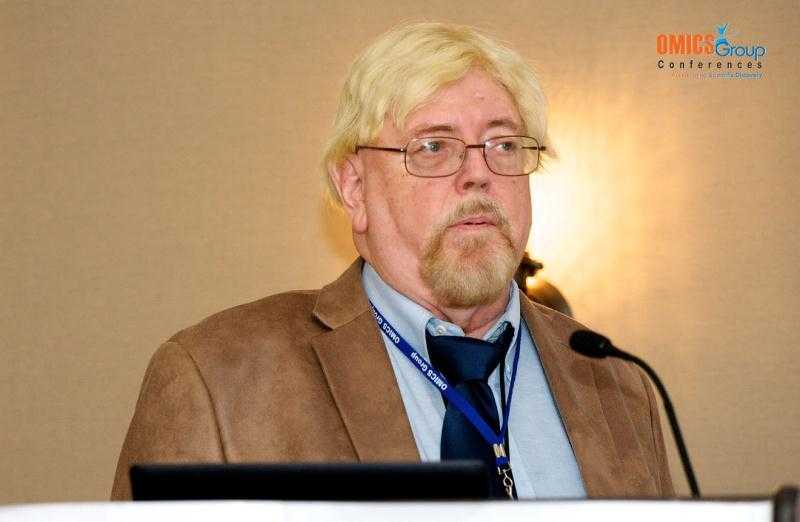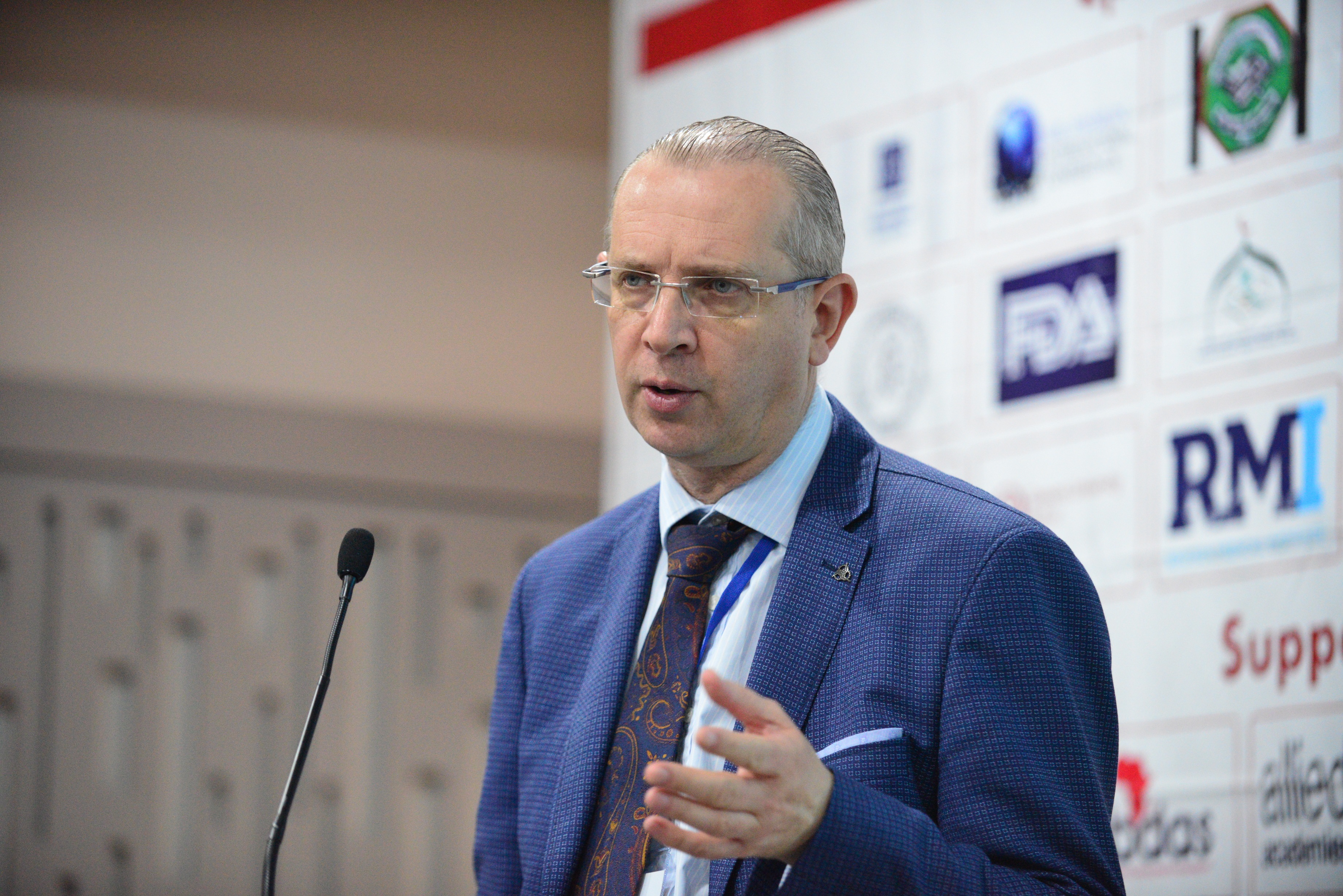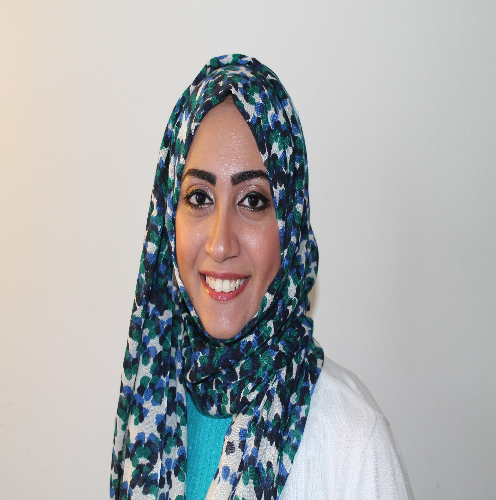Day 3 :
- Hematology | Hematologic Oncology
Session Introduction
Knox Van Dyke
West Virginia University Medical School, USA
Title: Diabetes 1, 2 and 3 (Alzheimer’s disease) cause defects in carbohydrate metabolism and originate from chronic inflammation linked to excessive peroxynitrite metabolism which kills mitochondria

Biography:
Knox Van Dyke was awarded his Doctorate degree in 1966 at Saint Louis University in the Department of Biochemistry of Nobel Prize winner Dr. EA Doisy, the discoverer of the estrogens and vitamin K. His did his Post-doctoral work at West Virginia University Medical School where he developed the first effective anti-malarial drug screening, still in use today. He became an authority on cellular chemiluminescence (luminescence) and cancer drug resistance reversal. He has made great strides in understanding chronic diseases e.g., Diabetes and Alzheimer’s disease.
Abstract:
Diabetes and Alzheimer’s diseases are chronic inflammatory diseases which result in a variety of untoward pathological consequences. Is it possible that the linchpin of these diseases have a common origin which if understood could either prevent or properly treat these diseases? Physician’s, scientists and drug companies tend to treat diseases with substances which treat obvious symptoms but do not treat the root cause. It is time to change this situation and direct attention to the root cause of these diseases for prevention or best treatment. Dr. Peter Barnes demonstrated that chronic inflammatory diseases destroy the epigenetic regulatory mechanism (via nitration) which causes the deacetylation of histones. Acetylation of histones causes inflammation. Nitration of histone deactylase 2 (HDAC-2) destroys the mechanism used by anti-inflammatory steroids. The key to the kingdom of diabetes and Alzheimer’s disease is control or diminish the substance that causes the chronic nitration which is the peroxide-peroxynitrite (OONO-) or its carbon dioxide derivative peroxynitrite carbonate. We will demonstrate how we can control OONO- which emanates from streptozotocin and causes diabetes and Alzheimer’s disease.
Sihem Bihorel,
University of Florida, USA
Title: Mechanisms of hematological toxicity of antibody drug conjugates: Role of drug-load release

Biography:
Sihem Bihorel utilizes quantitative systems pharmacology approaches to guide the development of new therapies and the identification of promising combination therapies as well as of novel biomarkers in oncology. She integrates quantitative systems pharmacology with PK/PD modeling and simulation to advance drug discovery and development and leverage the understanding of drugs action which holds great promise to facilitate translational research. Her research is also focused on investigating how priming solid tumors with a pro-apoptotic agent then combining a subsequent large protein therapeutic and an antiangiogenic agent can defeat drug resistance and treatment failure in cancer and further enhance the efficacy of targeted anticancer agents and translating these findings toward clinical settings. Earlier she has held the position of Research Assistant Professor at the State University of New York at Buffalo where she was also trained as a Post doctorate and received her PhD from the same.
Abstract:
Purpose: To develop a unified pharmacokinetic (PK)/pharmacodynamic (PD) model that describes the concentrations time profiles of the only two FDA-approved antibody-drug conjugates (ADCs) which are trastuzumab emtansine (TDM1) and Brenduximab Vedutin (SGN35) and their induced myelosuppression including thrombocytopenia for TDM1 and neutropenia for SGN35 in normal and human cancer xenograft mice.
Methods: Balbc mice, normal or nude xenografted with human Her2-positive breast cancer for the TDM1 treatment arm or Hodgkin lymphoma for the SGN35 treatment arm, were intravenously injected with either a large single does (SD) or multiple medium doses (MD) every week for two weeks. The investigated doses were 120 mg/kg (SD), 10 and 30 mg/kg (MD) for TDM1 and 15 and 45 mg/kg (MD) for SGN35. For each treatment arm group a control subgroup of normal mice were injected with saline. The hematological toxicity induced by both agents was followed by whole blood sampling every 2 days for platelets (PLT) and neutrophils (ANC) measurements using a hematology analyzer. Few blood samples were collected for total trastuzumab concentration measurements performed with a commercially available ELISA kit with a limit of quantification of 2 ng per mL. The plasma concentrations for SGN35, the payloads (DM1 for TDM1 and MMAE for SGN35) as well as the antibodies, trastuzumab (TDM1) and anti-CD30 (SGN35) were extracted from the literature. A non-linear mixed-effect modeling approach was performed using MONOLIX software. Model simulations were performed using Berkeley Madonna. Internal model evaluation was performed using a visual predictive check and the precision of the parameter estimates was assessed by the percent of relative standard errors (%RSE).
Results: A two compartment model with linear elimination described the PK of both ADCs. Similarly, the PK of the payloads DM1 from TDM1 and MMAE from SGN35 as well as the monoclonal antibodies, trastuzumab from TDM1 and anti-CD30 from SGN35, were described with two compartment models and linear eliminations after deconjugations (kdec) from their corresponding ADCs. The thrombocytopenia induced by TDM1 and neutropenia induced by SGN35 were captured with a series of five transit compartments representing proliferative and maturing cells in the bone marrow and the differentiated cells (PLT or ANC) in the blood circulation. A negative feedback loop was used to account for the observed tolerance phenomenon. The half-lives for TDM1 and SGN35 were estimated at 4.8 (32%) and 4.6 (21%) days and the kdec were 0.46 (18%) and 0.12 (13%) h-1. The lifespan for PLT under TDM1 and ANC under SGN35 were 3.73 (12%) and 4.72 (9%) days. Comparison of performance between alternative models suggests that TDM1 and SGN35 myelosuppressions are caused by different mechanisms: ADC binding to FcgR for TDM1 and payload-driven toxicity for SGN35 due to high lipophilicity of MMAE. Model based-simulations suggest that a 6-fold increase and 70% decrease in kdec of TDM1 and SGN35 would improve myelosuppression.
Conclusions: The developed unified PK/PD model well captured TDM1 and SGN35 PK as well as their corresponding payloads DM1 and MMAE and monoclonal antibodies trastuzumab and anti-CD30 plasma concentration profiles. The thrombocytopenia induced by TDM1 and neutropenia induced by SGN35 were also well captured with the suggested unified PD model for myelosuppression. The proposed unified PK/PD model could serve as a general platform for the investigation and prediction of PK and hematological toxicities to other ADCs.
C Cameron Yin
University of Texas MD Anderson Cancer Center, USA
Title: Clinical applications of immunoglobulin expression in acute myeloid leukemia

Biography:
C Cameron Yin has received MD from Beijing Medical University and PhD from the University of Wisconsin-Madison. She is currently an Associate Professor in the Department of Hematopathology at the University of Texas MD Anderson Cancer Center. In addition to clinical responsibilities on the leukemia, lymphoma and molecular diagnostic services, she has been actively participating in multiple research projects in the molecular genetic abnormalities in leukemia and lymphoma, which has led to over 100 research papers and over 20 book chapters.
Abstract:
It has been assumed that immunoglobulin (Ig) can only be produced by B-cells and plasma cells. Recently, we have reported that Ig can be expressed by other types of cells such as epithelial cancer cells. In this study, we studied Ig expression in acute myeloid leukemia (AML). We found that Ig was expressed at a high frequency and level in AML cell lines and primary myeloblasts, but not in monocytes or neutrophils from healthy controls by RT-PCR, immunohistochemistry and flow cytometry. We further assessed rearrangements of IgG VHDJH transcripts and found that AML-IgG had restricted (AML cell lines) or biased (primary myeloblasts) V usage. Moreover, its gene rearrangements showed evidence of somatic hypermutation. Anti-human IgG reduced cell viability and induced apoptosis in AML cell lines, whereas anti-human IgK increased cell migration and chemotaxis. Our findings suggest that AML-Ig may play a role in leukemogenesis and AML progression and it may serve as a useful molecular marker for monitoring minimal residual disease or designing target therapy. Study on the correlation between level of AML-Ig expression and morphologic and molecular genetics features as well as clinical outcome of AML patients is in progress.
Tenzin Saldon
All India Institute of Medical Sciences, India
Title: Study of north Indian blood donors: Attitude, obstacles and motivation towards donation (VP)
Biography:
Tenzin Saldon is a student pursueing in All India Institute of Medical Sciences from India.
Abstract:
Introduction: Continuous efforts are required to motivate people to donate blood, to urge donors to keep on donating blood on a regular basis and to inspire non-donors to start donating blood for sustaining self-sufficiency and matching the ever increasing clinical demand for various blood components. Therefore this study was done to determine the knowledge, attitude, reasons for not donating blood, misconceptions and motivations towards blood donation among people of New Delhi.
Aim: The aim of this study is to access blood donation among people by analyzing their perception and knowledge towards the cause through a questionnaire-based survey. This study also evaluates the reasons of donor deferral in a hospital-based blood bank in India. This can help blood donation centers to attract donors by developing appropriate policies and plans in future.
Materials & Methods: The study was carried out in New Delhi, India. This prospective study was done on group of 135 people during one month period. Blood Donors who visited our blood bank with age >18 years, eligible for blood donation were included in our study. Data collection was done with the help of forms given them. The form was divided into three parts and had fourteen questions regarding obstacles, misconceptions and motivations concerning blood donation. 27 females and 108 males were assessed. The respondents were briefed on the aims of the study and ways to fill the questionnaire. They were also ensured about confidentiality in this entire process. Statistics was then applied to the data and presented in forms of bar graphs for easy interpretation.
Results: The mean age of donor population was 29.3 years (males: 28.9 females: 30.5). Males had higher blood donation knowledge level as compared to females in the study. 53% of males were motivated to give blood during an emergency situation of someone close while 36.5% females were motivated by story of someone being saved from blood transfusion. 28.5% males were influenced by friends. 34% girls were afraid of needles and 30% males are afraid of unknown. The main obstacle was poor information. A message which makes one think had the highest average for a strong campaign (Females: 4.3 males: 3.8). For promoting blood donation (Average 3.9) males found television and radio programs most effective while (Average 4.2) females found personally talking with people who have already donated blood effective. Incentives like getting free blood tests and educational credits were found to lure people. Having proper information, being aware about the technicalities of the process and convenient place/time of donation encouraged people towards giving blood.
Conclusion: It is necessary to follow strict donor selection criteria to make blood donation safe and win the trust of future donors. The entire blood bank staff should share the responsibility of winning the confidence of donors and making blood donation a safe and pleasurable experience. The inputs from people can be useful in implementing relevant donor recruitment and to introduce strategies for maintaining an adequate and safe blood supply.

Biography:
German Espino L has completed his training in Internal Medicine, Hematology and Stem Cell Transplantation from Hospital Santo Tomas, Caja del Seguro Social and as a Visiting Physician at the Fred Hutchinson Cancer Research Center. He works as a Consultant in Hematology/Stem Cell Transplantation at the Caja del Seguro Social Hospital and as a Professor of Hematology at the University of Panama. He has collaborated as a coauthor in 5 different papers in reputed journals.
Abstract:
Although Panama is the strongest economy nowadays in the Central America Region, it is difficult to find resources for diagnostic purposes or treatment. In the era of the tyrosine kinase inhibitors we know that patients live longer, but this represents a high economical burden for an Institution with limited resources. In the following paper we present the results of the first 100 patients treated for chronic myeloid leukemia in chronic phase. The patients included are those that started treatment after the first tyrosine kinase inhibitor was approved for use in our institution. We will present our diagnostic approach and our follow up together with the limitations that we have had during this period.
- Blood Disorders | Diagnosis and Treatment
Session Introduction
Johns Stephen Batchelor
Central Manchester Foundation Trust, UK
Title: The pathogenesis of spontaneous intracranial hemorrhage in patients with hematological malignancy

Biography:
Johns Stephen Batchelor is currently a Consultant in Emergency Medicine at Central Manchester Foundation Trust, England UK. He is also the Honorary Lecturer at Manchester Metropolitan University. He has graduated from Leeds University, England, in 1982. He is a Fellow of the Royal College of Surgeons of Ireland and Fellow of the Faculty of Emergency Medicine, England. He undertook his MD thesis at University College, London. He has written extensively on the subject of minor head injuries. He has presented a paper in Paris in 2012 on a Meta-analysis looking at the relationship between cerebral micro bleeds and antiplatelet agents. He has also recently published a meta-analysis on the effect on mortality of platelet transfusions in adults with spontaneous or traumatic antiplatelet associated intracranial hemorrhage. His current research interest lies in the area of risk factors for intracranial hemorrhage in both adults and pediatrics secondary to coagulopathy and thrombocytopenia.
Abstract:
Spontaneous intracranial hemorrhage is a well recognized complication in patients with hematological disease. Intracranial hemorrhage is the second leading cause of death in patients with acute myeloid leukemia. The reported mortality is over 50% for patients with hematological malignancy and spontaneous intracranial hemorrhage. The reported incidence of spontaneous intracranial hemorrhage appears to be slightly higher in acute myeloid leukemia (AML) and chronic myeloid leukemia in blast crisis than in other forms of hematological malignancy. The distribution of ICH is as follows: intraparenchymal hemorrhage accounts for about 60% of the reported case series. The remaining sites are distributed between the cerebellum, brainstem, basal ganglia, subarachnoid, subdural, intraventricular and epidural regions. Over 50% of patients will having more than one intracranial bleeding site on CT. Previously proposed risk factors for spontaneous intracranial bleeding include: Direct invasion by tumor cells, invasive intracranial sepsis, hyper leukocytosis and coagulopathy. Abnormalities of clotting include DIC, thrombocytopenia and prolonged prothrombin time. Coagulopathy and thrombocytopenia are probably not the main factors responsible for spontaneous intracranial hemorrhage in view of the fact that neither platelets nor clotting factors are responsible for maintaining cerebral vessel integrity under normal physiological conditions. Cohort studies from patients with idiopathic thrombocytopenia have shown a poor correlation between platelet count and the risk of spontaneous intracranial hemorrhage in both adults and children. Batchelor has shown that coagulopathy in patients with traumatic intracranial bleeding increases the risk of progressive hematoma progression by an odds ratio of 6.176 (95% CI: 4.727-8.069). This paper aims to explore other factors which may account for spontaneous ICH in patients with hematological malignancy.
Nidal A Qinna
University of Petra, Jordan
Title: The quality of blood sample collection for preclinical testing: A focus on rat tail bleeding method

Biography:
Nidal A Qinna is an Associate Professor in Pharmacology and currently the Head of Pharmacology and Biomedical Sciences Department at University of Petra, Jordan. He has received his Doctorate (PhD) in Pharmacology in 2005 from the University of London, King’s College London, UK. He is the holder of FELASA-C License for conducting research on laboratory animals and currently managing the Animal House Unit and University of Petra. His expertise and research interests include animal models of diseases, conducting safety and toxicity studies, structure activity relationships in drug discovery, in vivo pharmacokinetic and pharmacodynamics studies, drug interactions, protein drugs, ethnopharmcology and surgical animal models.
Abstract:
Constructing a pharmacokinetic profile of a drug is usually done by collecting multiple blood samples from animals. Such samples can be easily collected from large animals by vein punctures or simply by withdrawing blood using a suitable syringe. Conversely, collecting multiple blood samples from small exotic animals is considered difficult. Generally, tail cut bleeding and tail clipping methods for collecting repetitive blood samples are considered aggressive and associated with post recovery pain. Nevertheless, these methods are routinely conducted in veterinary clinics by well trained practitioners. However, special considerations and training must be undertaken when using these methods for drug discovery in order to reduce pain and stress associated with such techniques. Toe clipping, nail clipping and ear clipping are not acceptable in veterinary hospitals and will probably not produce diagnostic samples. Therefore, using these techniques in drug discovery is limited. On the other hand, tail bleeding methods are widely used and considered easy and less problematic to the practitioner. After acknowledging the advantages and disadvantages of collecting blood samples by tail bleeding methods it was important to test these methods in our laboratories to ensure its validity in drug pharmacokinetic studies and biological preclinical investigations.
Visweshwar Nathan
University of South Florida, USA
Title: Intracranial hemorrhage-with oral anti-coagulant therapy
Biography:
Nathan Visweshwar has completed his Medical training in Madras Medical College and proceeded to UK and later to Canada for his training in Medicine andHematology. He was in Middle East & Asia practicing Clinical and Laboratory Hematology. He is presently the Director of the Hemophilia/Hematology program in the University of South Florida, Tampa, FL. He has taken part in more than 50 clinical trials, both academic and drug sponsored clinical trials
Abstract:
According to data from the National Electronic Injury Surveillance System (NEISS), warfarin is the most common drug-related cause of hospitalization (accounting for 33% of such hospitalizations) for adverse events among older adults in the U.S [1]. Incidence of atrial fibrillation increases with age, with a prevalence of 0.1% in people over 55 years of age and 90% in those over than 80 years. The number of patients with atrial fibrillation is likely to increase 2.5-fold during the next 50 years, reflecting the growing proportion of elderly individuals [2]. Incidence of intracerebral hemorrhage in patients receiving oral anticoagulants ranges from 0.3% to 1% per year [3]. Warfarin-related intracerebral hemorrhage carries a particularly high risk of neurologic deterioration and death because of a high rate of hematoma expansion of about 50%. Novel oral anticoagulants (NOACs)--apixaban, dabigatran, and rivaroxaban--have a significantly smaller risk of intracerebral hemorrhage (ICH). Nearly after fifty years of warfarin use, the newer oral anticoagulants are taking over its place in management of both arterial and venous thrombotic states. There is no ideal anticoagulant, and issues regarding predictors of hemorrhage, monitoring anticoagulant therapy, early diagnosis and improving overall survival of patients with intracranial hemorrhage is still challenging.
Khulud Abudawood
University of Florida College of Nursing, USA
Title: What matters for people with sickle cell disease and their families?

Biography:
Khulud Abudawood is from Saudi Arabia. She has completed her Master of Nursing Sciences in 2014 from the University of Pennsylvania. Currently, she is in her third year as a Ph.D. student at the University of Florida, College of Nursing. Her research interest is in Sickle Cell Disease, improving the quality of life, and symptom management. She is in the process of publishing manuscripts based on the study findings with her Chair Dr. Saunjoo Yoon, Ph.D., RN.
Abstract:
Sickle cell disease (SCD) is a hereditary blood disorder. It is highly prevalent in Saudi Arabia (SA), causing serious complications which decrease the quality of life (QoL) and cause high mortality in young adults. This systematic review aims to evaluate the current status of SCD in SA compared to the US, and provide practical recommendations for patients with SCD, their families and healthcare providers. Also, this presentation proposes the health outcomes palliative care theoretical model to postulate integrative and comprehensive care for individuals with SCD to improve their QoL across the spectrum of illness, which will be inclusive of their physical, psychological, emotional, spiritual and social health issues.
Methods: A total of 32 articles were identified to review the prevalence of SCD in SA, pain management issues, frequent disease-related complications, manifestations, currently available preventive methods, and factors contributing to the incidence rate. Original articles were found and analyzed regarding the role of palliative care for persons with SCD using Walker and Avant's theory analysis criteria.
Results: Findings indicate 1) importance of implementing a newborn screening (NBS) program to identify SCD and to provide early interventions, 2) organized and systematic evaluation of premarital screening (PMS) program that has been implemented since 2004, 3) necessity of public and family education about self-care management of SCD in SA.
Furthermore, the health outcomes palliative care theoretical model is a middle range theory introduce a practical approach to guide future research and interventions. It included concepts of palliative care in addition to other disease modifying and symptom control interventions, advance planning of care and supportive care. It focuses on both personal and environmental factors as predictors of the health outcomes. Measuring health outcomes such as the quality of life, perceived health status, pain and symptom experience, biological functioning and functional status, can be used by healthcare providers including nurses, physicians and researchers to identify the impact of palliative care on the lives of people with SCD.
Conclusion: Future studies are needed to develop culturally sensitive interventions to manage SCD symptoms in SA including educational and non-pharmacological interventions. Education for effective self-care management may empower individuals and their families to manage symptoms, decrease emergency room visits, and improve the QoL of persons with SCD in SA. Moreover, the proposed model for individuals with SCD provides a new paradigm of care that meets the needs and goals of patients with SCD and their families. Also, it can be used in generating hypotheses to guide clinical research and practice. Future studies and empirical testing are needed to examine the relationships between the proposed concepts
Vandana Sharma
All India Institute of Medical Sciences, India
Title: Functional characterization of T-cell subsets in acquired aplastic anemia patients: Pilot study

Biography:
Vandana Sharma is currently pursuing PhD under the guidance of Dr. Tulika Seth, Additional Professor, Department of Hematology, All India Institute of Medical Sciences, India.
Abstract:
Acquired aplastic anemia (aAA) involves immune mediated destruction of hematopoietic stem cells by T lymphocytes. Response to immune suppressive therapy (IST) is 50-60%. Aim of study was to evaluate the frequencies and function of T-cell subsets in peripheral blood (PB) and bone marrow (BM) of newly diagnosed, untreated aAA patients compared to that of controls. 15 aAA patients and 15 healthy controls were studied. Th1 (CD4+IFNγ+), Th2 (CD4+ IL4+), Th17 (CD4+ IL17A+) along with CD8 surface marker and T-regulatory cells (Tregs; CD4+ CD25+ FOX P3+) were analyzed in PB and BM of patients and in PB of controls with three color flow cytometry. In PB of patients the mean percentage frequencies of different cell types were Th1=1.72, Th2=1.09, Th17=1.13, CD8+IFNγ+=1.61, CD8+IL4+=0.68, CD8+IL17a+=0.78 and Tregs=2.84, while in PB of controls the respective frequencies were Th1=0.92, Th2=0.44, Th17=0.60, CD8+IFNγ+=0.83, CD8+IL4+=0.37, CD8+ IL17a+=0.46 and Tregs=6.05. There was a significantly higher percentage of different cell types in PB of patients as compared to PB of controls i.e., Th1, Th2, Th17, CD8+IFNγ+, CD8+IL4+, CD8+ IL17a+ (all p values <0.05), whereas Tregs mean frequency was lower in patients than controls (p=0.0001). There was no difference in frequencies of respective cells between PB and BM of patients. Significantly increased Th1, Th2, Th17, cytotoxic T-cells and decreased T-regulatory cell frequencies skew the ratio of T-lymphocytes in aAA. These cells and their effector cytokines injure bone marrow rendering it hypocellular.
Areeg bala elbashir Mohamed ahmed
King Abdulaziz Hospital-Al Ahsa, Saudi Arabia
Title: Assessment of Chemotherapeutic Responsiveness in Non-Hodgkin Lymphoma Patients at KAH, Al Ahsa KSA

Biography:
Areeg Bala Elbashir Mohamed Ahmed completed MD from University of Khartoum, Sudan. Her research interests are Oncology and Molecular Medicine.
Abstract:
Lymphoma is a blood cancer that develops in the lymphatic system, grows in out of control and develops malignant cells. These abnormal cancer cells grow and make more abnormal cells which then accumulate forming masses. The two main types are Hodgkin lymphoma and non-Hodgkin lymphoma (NHL). NHL is a group of blood cancers that have similar characteristics in how they develop, and its causes are still not clear. Lymphoma presents with a wide range of symptoms including cough, sweating, fatigue, fever, night sweat, chest pain, SOB, lymph node enlargement and weight loss. Diagnosis is made by laboratory studies, images, biopsy, and cytogenetic methods. Staging is based on the size and locations and whether the tumor spread to other side of the body, from stage 1 to stage 4. Lymphoma is a curable disease and people can live long life after being diagnosed. Chemotherapy has generally been presented as a rational and promising way to cancer treatment throughout the years. It is generally given in cycles: A treatment period is followed by a recovery period, then another treatment period, and so on. Many different chemotherapy drugs are available, and can be used alone or in combination to treat a wide variety of cancers. The regimen presently used in Saudi Arabia is combinations of Cyclophosphamide, Hydroxydaunorubicin, Oncovin (vincristine), Prednisolone, and Rituximab (CHOP, R-CHOP). The current literature lacks data on the subject to estimate the responsiveness in NHL patients in the Kingdom of Saudi Arabia. Through this study, I aim to determine the age distribution, gender, tumor type and stage, and type of chemotherapy used for patients with NHL, to evaluate the survival of chemotherapeutically treated NHL patients and to determine the incidence of common side effects encountered following starting chemotherapy. This retrospective study took place in King Abdul Al Aziz Hospital (KAH) in Al Ahsa, which is one of the five hospitals of MNGHA (Ministry of National Guard Health Affairs in Saudi Arabia). The study period was from October 2015 to January 2016; data of the targeted patients was collected from the medical records of the list of the patients who have visited the hospital for cancer treatment. A total of 35 eligible participants have been included. I found that 71.4% patients survived and 28.6% died within the first year of chemotherapy. The mean age of patients was 61 years. 45.7% were male and 54.2% were female. 85.7% had B-cell NHL and 14.3% had follicular lymphoma. 88.6% received R-CHOP and 11.4% did receive R-CVP. 45.7% were stage 1 and 22.9% were stage 4. 57.1% didn’t show any systemic side effects and 40% developed leucopenia. No significant different between gender for survival time in NHL patients (p=.448) was observed. Same goes for survival distribution for different kinds of chemotherapy (p=.240). for survival time and stages of NHL (p=.838).
Biography:
Dr. Chakra Chaulagain is an attending hematologist at Cleveland Clinic. He completed clinical and research fellowship in hematology and oncology at Tufts University Medical Center in Boston. His clinical and research interests include hematologic malignancy with special interest and expertise in clonal plasma cell neoplasms including AL amyloidosis.
Abstract:
Systemic AL amyloidosis (AL) is a multisystem disease characterized by organ damage due to monoclonal free light chains produced in the bone marrow by a neoplastic clone of plasma cells. The clone can be targeted by various treatments with the goal of curbing the production of the organ toxic light chains and thereby stopping and possibly reversing the organ damage present at the time of diagnosis. AL amyloidosis remains an incurable disease despite treatment options that include steroids, cytotoxic chemotherapy, risk-adapted melphalan and autologous hematopoietic stem cell transplantation, proteasome inhibitors and immunomodulatory drugs. Newer and effective treatment approaches that can rapidly reverse the organ damage are urgently needed. Monoclonal antibodies targeting the plasma cells may become available in future for management of this disease. An updates for the practicing clinicians as well as the areas of future research will be reviewed in this presentation.
